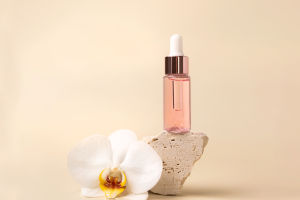Natural wood plays a pivotal role in the fragrance industry, serving as the cornerstone of woody perfumes.
These scents are cherished for their depth, warmth, and the myriad emotions they evoke.
The use of wood not only adds richness to perfumes but also connects us to nature, providing a sense of grounding and tranquility.
At the heart of many woody fragrances are key natural ingredients such as sandalwood, cedarwood, vetiver, and oak. Each of these woods offers unique aromatic profiles that contribute to the overall character of the perfume.
Sandalwood, for example, is renowned for its creamy, warm aroma. Its soft and smooth scent is often described as calming and meditative, making it a popular choice for heart notes in perfumes.
Sandalwood’s ability to blend seamlessly with other fragrance notes enhances its versatility, allowing it to harmonize with florals, spices, and even citrus.
Cedarwood is another essential component in woody perfumes, characterized by its fresh, dry, and slightly spicy aroma. This wood is often associated with strength and stability, evoking imagery of vast forests and ancient trees.
Cedarwood’s crisp scent is uplifting and grounding, often used in base notes to anchor the fragrance. When combined with other ingredients like amber or resin, cedarwood can create a complex and layered olfactory experience, transporting the wearer to serene natural landscapes.
Vetiver, derived from the roots of a tropical grass, offers an earthy, smoky scent that is both refreshing and robust. Its deep, rich aroma has a unique ability to evoke feelings of warmth and security.
Vetiver is frequently used in men’s fragrances, imparting a sense of masculinity and strength. However, its versatility allows it to be included in unisex and women’s perfumes as well.
The interplay between vetiver and other notes, such as citrus or floral elements, creates a beautifully balanced fragrance profile that can be both sophisticated and approachable.
Oak is another significant player in the realm of woody perfumes. Often associated with strength and endurance, oak wood brings a robust, leathery aroma to fragrances. Its scent can be reminiscent of aged barrels used in whiskey production, adding a touch of warmth and depth to the overall fragrance.
Oak is typically used in the base notes, where it provides a lasting impression that can linger on the skin for hours, making it a favorite among perfumers looking to create lasting, impactful scents.
In addition to these primary ingredients, other woods such as birch, mahogany, and guaiac wood contribute to the complexity of woody perfumes.
Each wood carries its own story and character, enriching the fragrance with layers of scent that can transport the wearer to various emotional landscapes.
The natural, raw qualities of these woods resonate with consumers who seek authenticity in their fragrances, connecting them to nature in a world that often feels disconnected.
Moreover, the sustainable sourcing of these woods has become increasingly important in the fragrance industry. As consumers become more environmentally conscious, the demand for ethically harvested ingredients has risen.
Many perfumers now prioritize sustainability, ensuring that the wood used in their fragrances is sourced from responsibly managed forests, thereby preserving the integrity of nature while creating beautiful scents.
Natural wood serves as a fundamental element in woody perfumes, offering a rich tapestry of aromas that evoke a deep connection to the natural world.
The unique characteristics of woods like sandalwood, cedarwood, vetiver, and oak contribute to the complexity and allure of these fragrances, making them timeless choices for both men and women.
As the fragrance industry continues to evolve, the appreciation for natural wood and its role in perfumery remains steadfast, ensuring that these beautiful scents will endure for generations to come.


